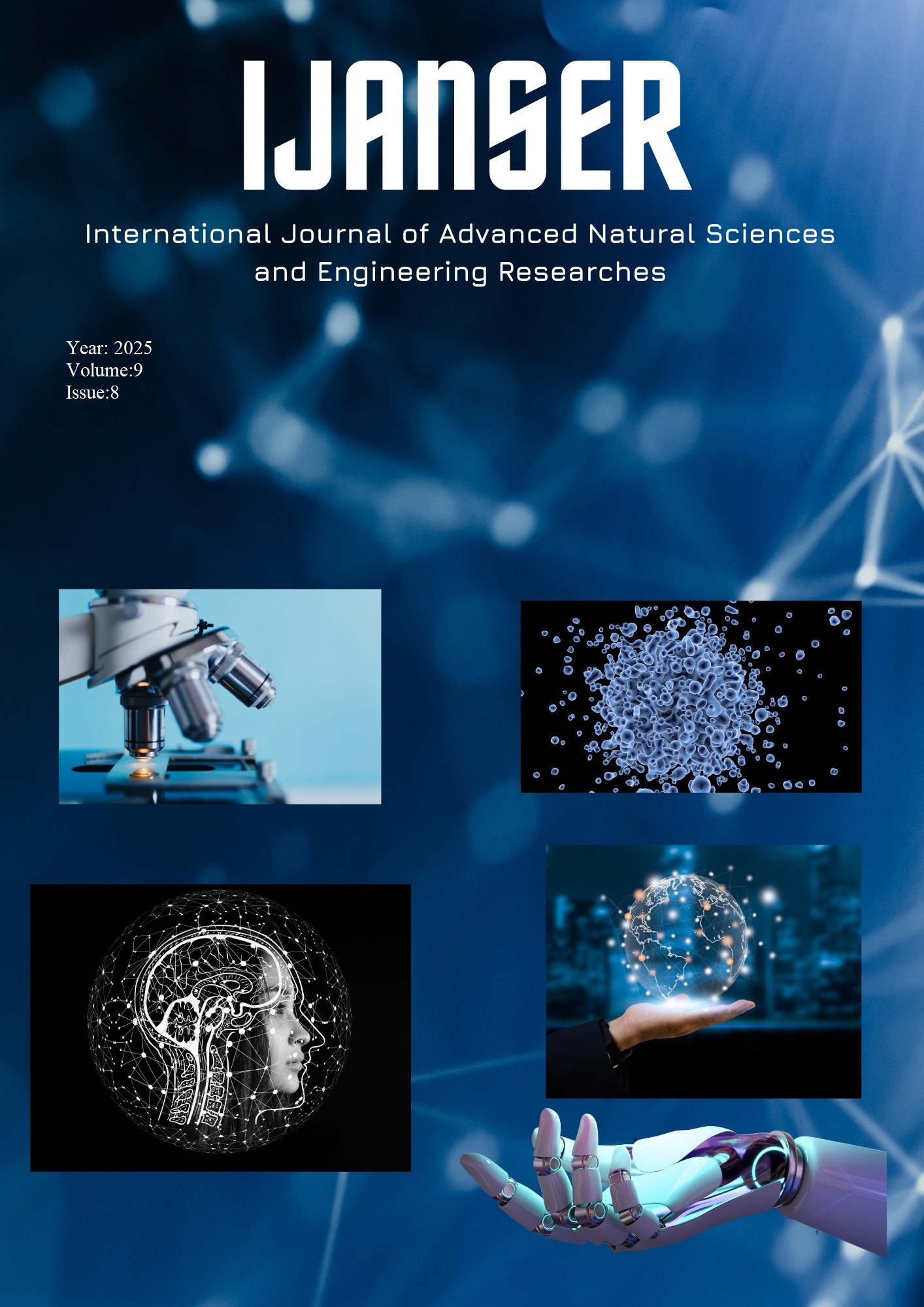Optimization of Laser Micromachining using Advanced Predictive Deep Learning
Keywords:
Ultrashort Pulse Laser Micromachining, DNN, MSE, MAEAbstract
Ultrashort pulse laser micromachining is a transformative technology for precision
manufacturing, enabling intricate microchannel fabrication across diverse applications such as
semiconductors and microfluidics. This research presents a novel Deep Neural Network (DNN)-based
simulator designed to autonomously predict optimal laser processing parameters, enhancing energy
efficiency and precision. Implemented in Python within a Jupyter Note- book environment, the simulator
leverages critical inputs, including microchannel dimensions, refractive index, optical absorption
coefficient, and propagation loss, to optimize laser settings for materials like fluorides, germanates, and
silicates. The model achieves high predictive accuracy, with R² scores exceeding 0.98 for pulse duration,
repetition rate, and speed, and 0.93 for pulse energy, as validated through metrics like Mean Absolute
Error (MAE) and Mean Squared Error (MSE). This work establishes a robust framework for automated
parameter optimization, reducing experimental trials and advancing smart manufacturing. Future
enhancements include real-time parameter adjustment and expanded material compatibility, positioning
the simulator as a pivotal tool for industrial and academic applications.
Downloads
References
Rethfeld, B., Ivanov, D. S., Garcia, M. E. & Anisimov, S. I. Modelling ultrafast laser ablation. J. Phys. D. Appl. Phys. 50, (2017).
Khalid, M., Chen, G. Y., Bei, J., Ebendorff-Heidepriem, H. & Lancaster, D. G. Microchip and ultra-fast laser inscribed waveguide lasers in Yb 3+ germanate glass . Opt. Mater. Express 9, 3557 (2019).
Khalid, M. & Arshad, I. Design and Simulation of Photonic Crystal Fibers to evaluate Dispersion and Confinement Loss for Wavelength Division Multiplexing Systems DESIGN AND SIMULATION OF PHOTONIC CRYSTAL FIBERS TO EVALUATE DISPERSION. (2016).
Setia, R. & May, G. S. Modeling and optimization of via formation in dielectrics by laser ablation using neural networks and genetic algorithms. IEEE Trans. Electron. Packag. Manuf. 27, 133–144 (2004).
Shinde, M. . Investigation of Effect of Laser Beam Machining Process Parameters on Performance Characteristics of Stainless Steel. Res. Technol. 10, 621–625 (2017).
Rana, R. S., Chouksey, R., Dhakad & Paliwal. Optimization of process parameter of Laser beam machining of high strength steels: A review. Today Proc. 5, 19191–19199 (2018).
Wadekar, S. & Deokar, S. U. Effect of Process Parameters on Laser Cutting Process: A Review. Imp. J. Interdiscip. Res. 2, (2016).
Khalid, M., Usman, M. & Arshad, I. Germanate glass for laser applications in ∼ 2.1 μm spectral region: A review. Heliyon 9, e13031 (2023).
Rajesh, A. S., Prabhuswamy, M. S. & Krishnasamy, S. Smart Manufacturing through Machine Learning: A Review, Perspective, and Future Directions to the Machining Industry. J. Eng. (United Kingdom) 2022, (2022).
Bundesanstalt, G. Issue “ Advanced Machining Technology ”. (2023).
Jiang, J. A survey of machine learning in additive manufacturing technologies. Int. J. Comput. Integr. Manuf. 00, 1–23 (2023).
McDonnell, M. D. T. et al. Machine learning for multi-dimensional optimisation and predictive visualisation of laser machining. J. Intell. Manuf. 32, 1471–1483 (2021).
Patidar, D. & Rana, R. S. The effect of CO2 laser cutting parameter on Mechanical & Microstructural characteristics of high strength steel-a review. Mater. Today Proc. 5, 17753–17762 (2018).
Tani, S. & Kobayashi, Y. Ultrafast laser ablation simulator using deep neural networks. Sci. Rep. 12, 1–8 (2022).
Holder, D. et al. Analytical model for the depth progress of percussion drilling with ultrashort laser pulses. Appl. Phys. A Mater. Sci. Process. 127, 1–8 (2021).
Kotadiya, D. J., Kapopara, J. M., Patel, C. G. & Pandya, D. H. Parametric analysis of process parameter for Laser cutting process. Mater. Today Proc. 5, 5384–5390 (2018).
Khalid, M., Chen, G. Y., Ebendorff-Heidepreim, H. & Lancaster, D. G. Femtosecond laser induced low propagation loss waveguides in a lead-germanate glass for efficient lasing in near to mid-IR. Sci. Rep. 11, 1–12 (2021).
Kobayashi, Y. et al. Fully Automated Data Acquisition for Laser Production Cyber-Physical System. IEEE J. Sel. Top. Quantum Electron. 27,1–8 (2021).





